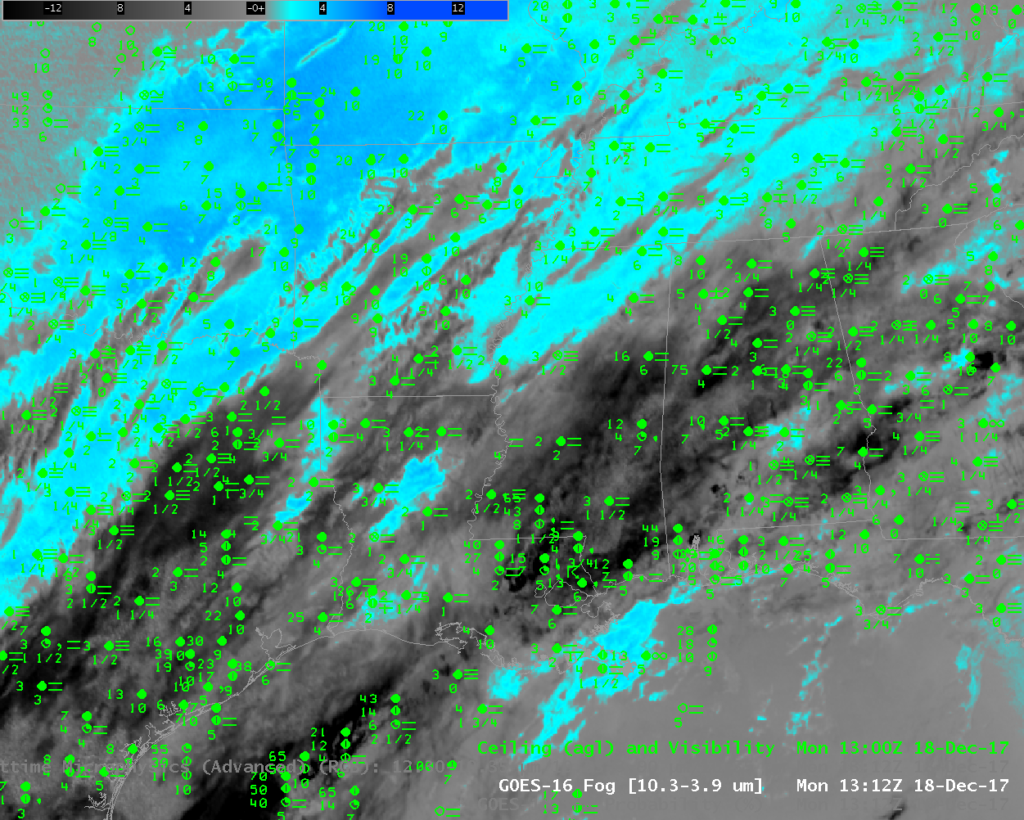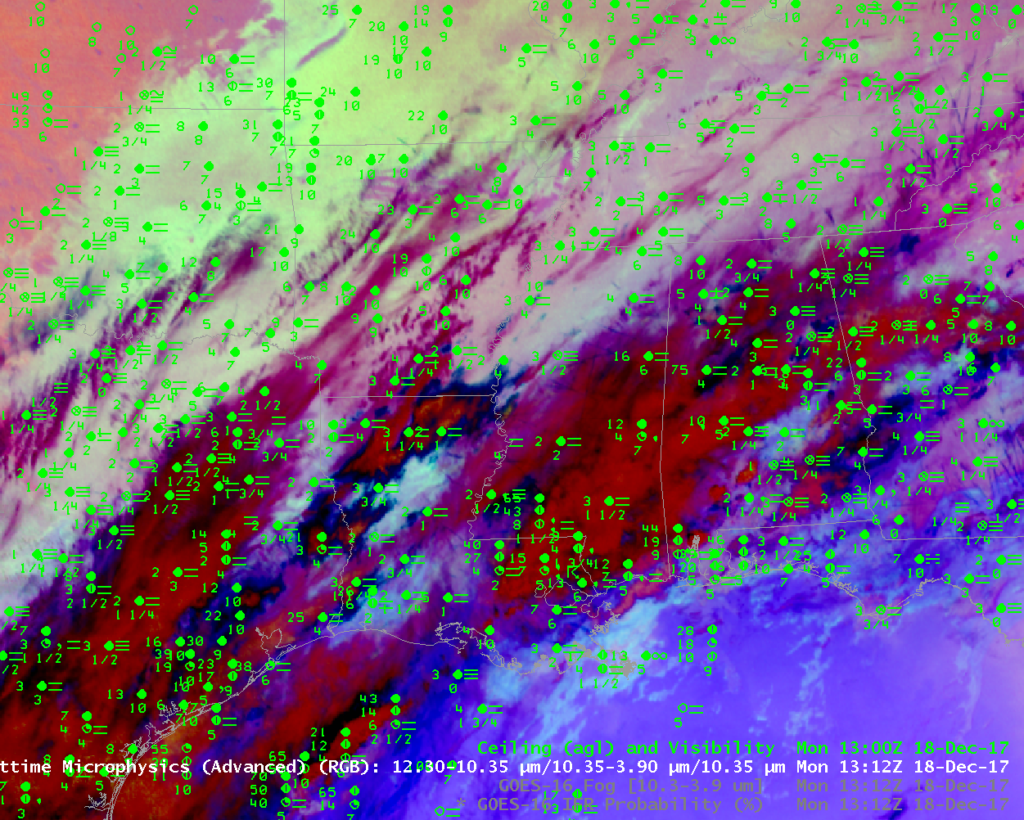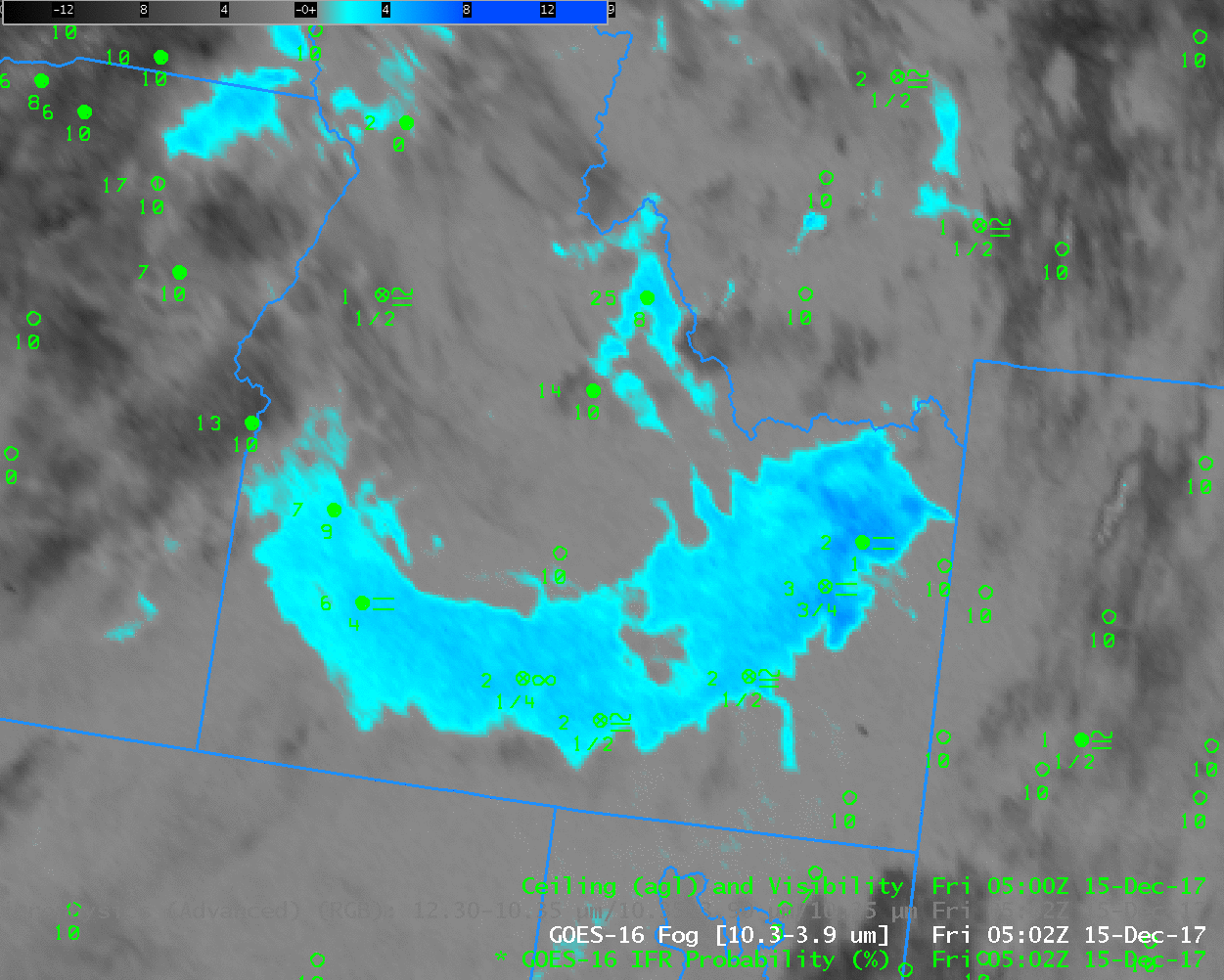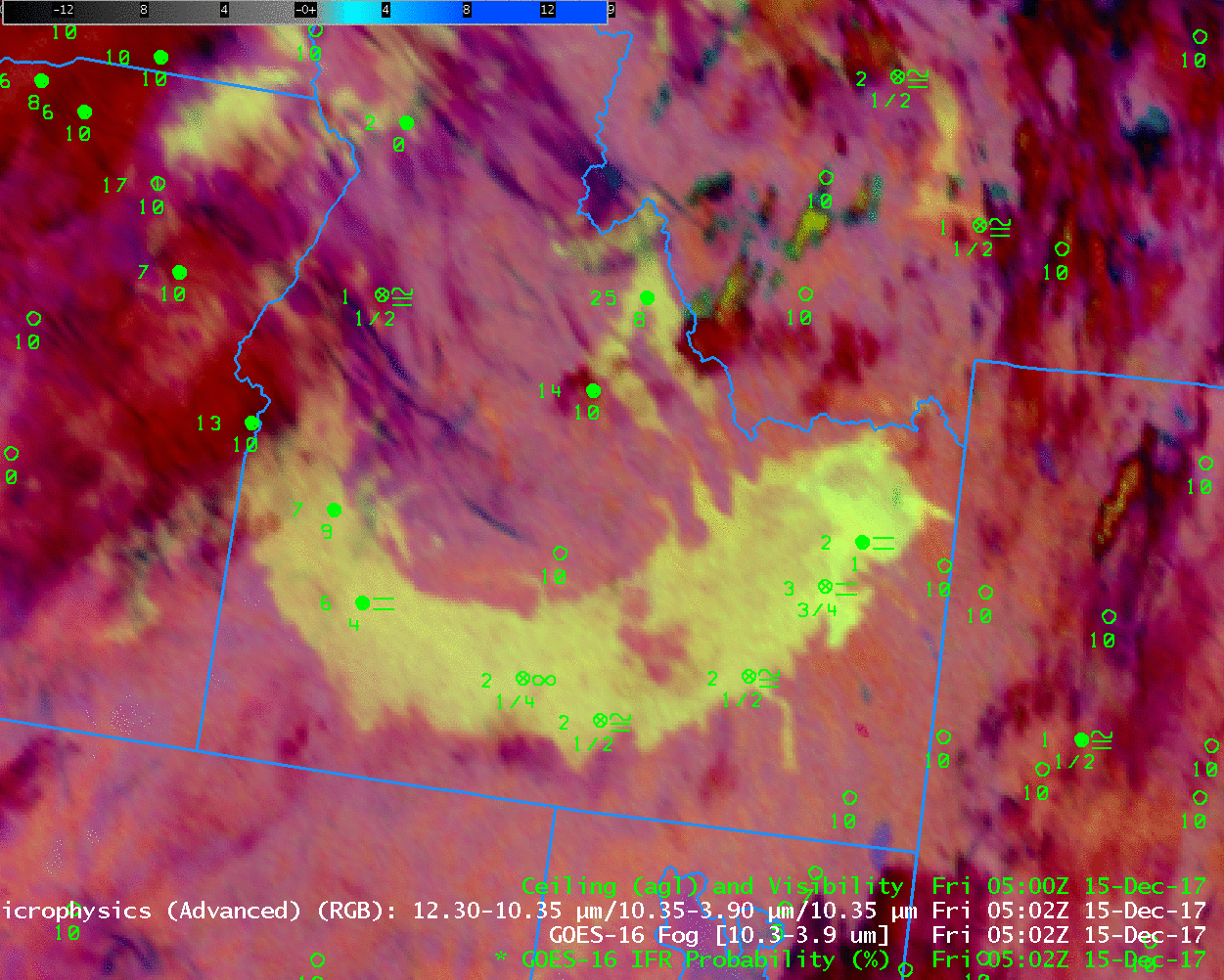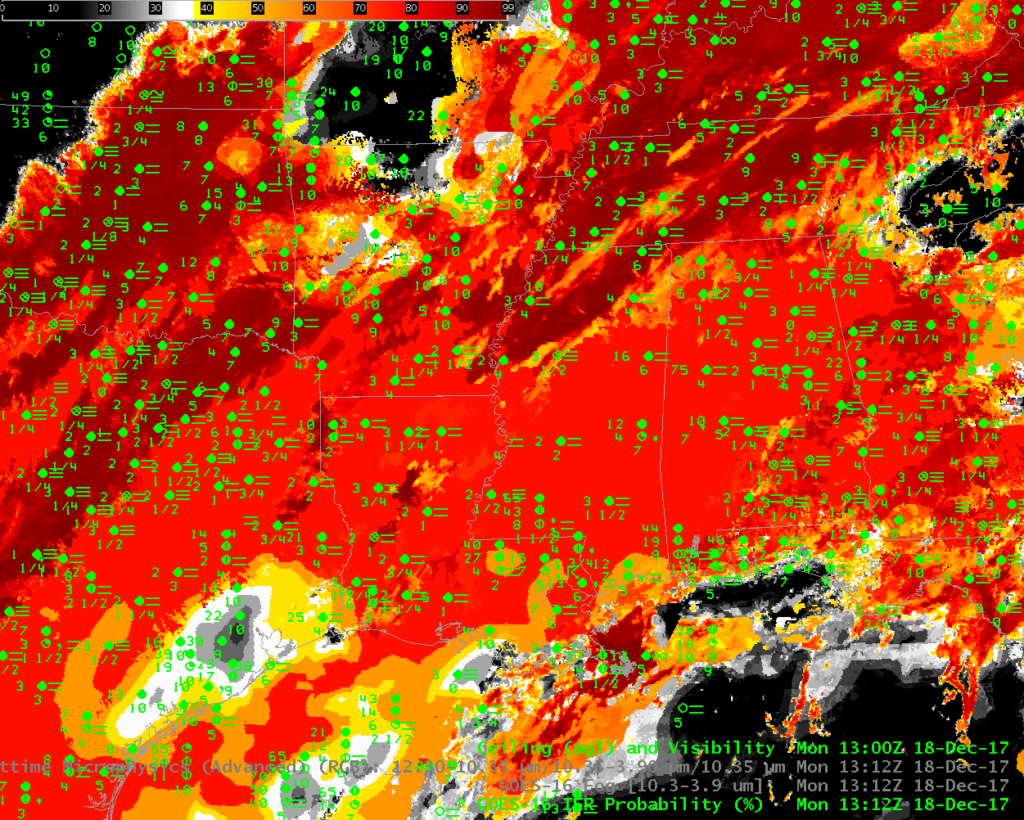
GOES-16 IFR Probability fields, 1312 UTC on 18 December 2017 (Click to enlarge). Ceilings and visibilities are also plotted.
Dense Fog was widespread across the south on Monday morning, 18 December 2017 (See the screen capture below from this site at 1319 UTC). The GOES-16 IFR Probability field, above, highlights the regions of IFR and near-IFR conditions very well. It has a flat character over much of central Mississippi and Alabama. These are regions where multiple cloud decks are preventing the satellite from viewing the near-surface clouds, and where Rapid Refresh data are being used as the sole predictor for the probability of IFR conditions. In contrast, the IFR Probability field over much of Tennessee and Arkansas (for example) has a pixelated look to it — there are small variations over very small distances: over these two states, higher clouds are not preventing the satellite from viewing near-surface clouds, and satellite data can also be used as a predictor in the IFR Probability fields (See the 10.3 µm – 3.9 µm Brightness Temperature difference field below).

Screen Capture from http://www.weather.gov at 1319 UTC on 18 December 2017 (Click to enlarge). Grey regions are under Dense Fog Advisories.
When high clouds are present, fog detection techniques that rely solely on satellite data struggle to detect low clouds. Compare the above field, for example, to the 10.3 µm – 3.9 µm Brightness Temperature Difference field (sometimes called the ‘Fog Product’). In the enhancement used (the default enhancement in AWIPS), fog is depicted as blue (a positive value in the brightness temperature difference) and cirrus/high clouds in black. There is little signal of Fog over a region where Dense Fog advisories have been issued. Similarly, the Advanced Nighttime Microphysics RGB, below, that relies on the 10.3 µm – 3.9 µm to highlight low clouds that might be fog, also is not indicating fog (a light cream/cyan color, typically) over much of the Deep South. When cirrus clouds are present, its use, like that of the Fog Brightness Temperature Difference, is of dubious value.
The last figure, at the bottom, toggles between all three fields at 1312 UTC.

